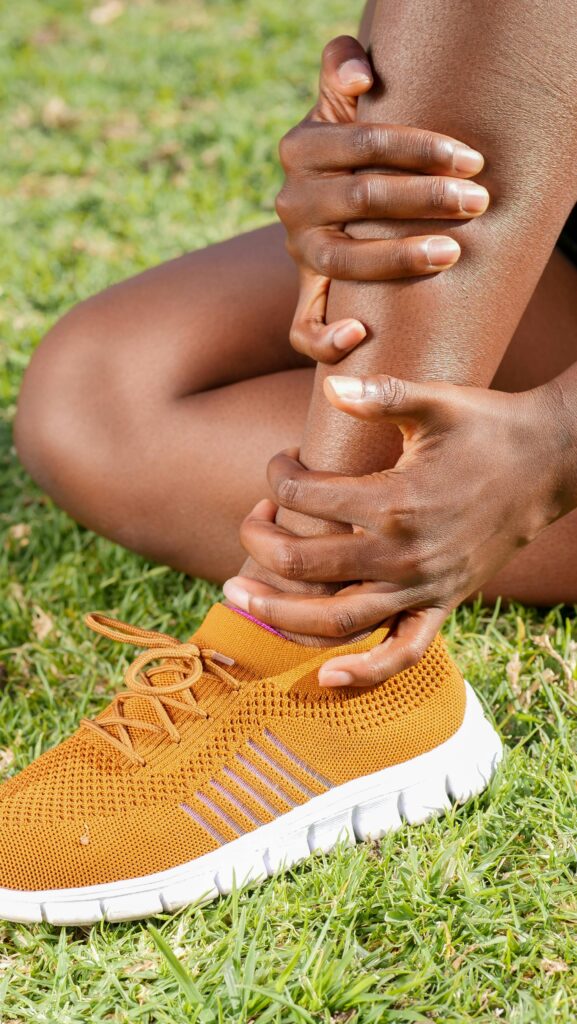Learn and Grow: The Healing Journey in Sports

In June 2023, I was in Milwaukee, WI for Tour of America’s Dairyland, an eleven-day series of criterium races that is near and dear to my heart. I grew up in Wisconsin and there’s something special about returning home each summer to race my bike. During the warmup, I told an acquaintance that I was coming off of the post-race high from Unbound 200, an ultra-endurance gravel bike race in the Flint Hills of Kansas. I joked about the need to find my sprinting legs so I could hang on for dear life in the Pro/Elite peloton. We learn and grow.
Flying Over the Handlebars
The next thing I knew, I was flying over the handlebars at 25 mph in a pileup of bikes and other women. I did a forward somersault, landed on the pavement, and somehow managed to avoid hitting my head. Despite racing in endurance sports the last 14 years, I’d been pretty fortunate up until this point, with only a few minor bike crashes, one concussion, and some patellar tendonitis that I continue to keep in check. I’ve always bounced back pretty quickly.
But this?
This was different.
Back To My Car
A cycling buddy and I spent several minutes on the pavement, and then the grass, in an effort to collect ourselves. I eventually managed to stand up, thanks to the support of some amazing volunteers and spectators, and took my busted bike to neutral support to see what the damage was. From there, I slowly hobbled my way back to my car. I drove 35 minutes to my AirBnB, which was near the next day’s race location.
Finally, I could rest. I was alone.
The second I opened the door and set my bags down, the pain set in. Like REALLY set in. And then so did the tears. It hurt to breathe. to stretch. to move. to flex.
I knew I had to go in.
Urgent Care
Fast forward through an urgent care visit, X-rays, and eventually PT and acupuncture. All things considering, I came out in surprisingly decent shape: a huge hematoma on my right hip, bruised ribs, and torn intercostal muscles. I was (and still am) 1000% convinced that I would have been far worse if it weren’t for a strong nutrition and strength training game. I love food. And lifting. And man, did it pay off here.
My denial lasted a few days. I convinced myself I’d be back at it in no time. But when things didn’t look up as quickly as they had in the past, I raised my white flag and eventually called it quits for the season.
Whether I liked it or not, I knew I was in for a long road.
Injury sucks. I know this. I’m a sport psychologist, meaning I spend most of my time talking to athletes about the skeletons in their closet, the emotional highs and lows of sport, and the painstakingly slow process of injury recovery. One day, we’re planning our upcoming week of training, wondering how we’ll squeeze it all in between our busy work and family commitments. The next thing we know, we’re replacing workouts with PT appointments and anxiously asking healthcare providers when we can get back to training.
ADVERTISEMENT
The Unknowns
All too often, we miss the conversations about mental health. The frustration of the unknowns and the changing timelines. The isolation that stems from missing our weekly group rides. The changes in neurotransmitters resulting from the lack of exercise that our brain and body are so used to.
What do we do with these things?!
We take those gnarly thoughts and feelings along for the ride. Easier said than done, but hear me out:
As athletes–and as humans—we learn to push away difficult thoughts and feelings. If there’s anything I know about endurance athletes, it’s that we like to plan, and we like control. Feelings of anxiety, self-doubt, and frustration threaten our ability to plan, let alone feel in control.
Because of this, a lot of athletes start fighting back when caught in the spiral of impatience, grief, restlessness, and the inner critic. It’s common for me to hear things like, “I just need to be more motivated” (or as my Gen Z athletes say, “I just need to lock in.”).
But what if we let ourselves ride out the emotional storm, as much as it sucks, knowing it will come and go? Just like the pain cave. Just like motivation. Just like our appetites.
Stop Fighting the Difficult Thoughts
So, when I meet with my athletes, this is one of the first things I teach. Stop fighting the difficult thoughts and feelings. We know they’re going to show up–especially when we’re injured. When they show up, give them a name. Give them the nod, similar to when you acknowledge someone you see in public, yet keep walking, because you’ve got somewhere to be.
What’s Important to You?
In other words, treat them like you would an unwelcome guest on a group ride or run. Let them come along for the ride. But instead of giving them all of your attention, focus on what’s important to you and your recovery: Lean into relationships with loved ones and teammates. Accept (and ask for) help. Double down on your sleeping and eating habits. Find great healthcare providers and follow their guidance! Focus on the long game, and celebrate all of the little wins along the way.
But please, whatever you do, don’t ignore those skeletons in the closet. They’ll start banging on the door, and they won’t stop until we listen. And when we listen?
We learn and grow. And we heal.
ADVERTISEMENT

With over a decade of research and clinical experience, Dr. Ayala (she/her) is a Licensed Psychologist and Certified Mental Performance Consultant based in Minneapolis, MN. Dr. Ayala is a published author of over 20 research articles and book chapters, and has been featured in Trailrunner Magazine, the New York Times, and other media outlets. Beyond her professional achievements, she is an accomplished cyclist, having landed on National podiums in road racing, fat bike racing, virtual racing, and gravel racing over the past several years.





